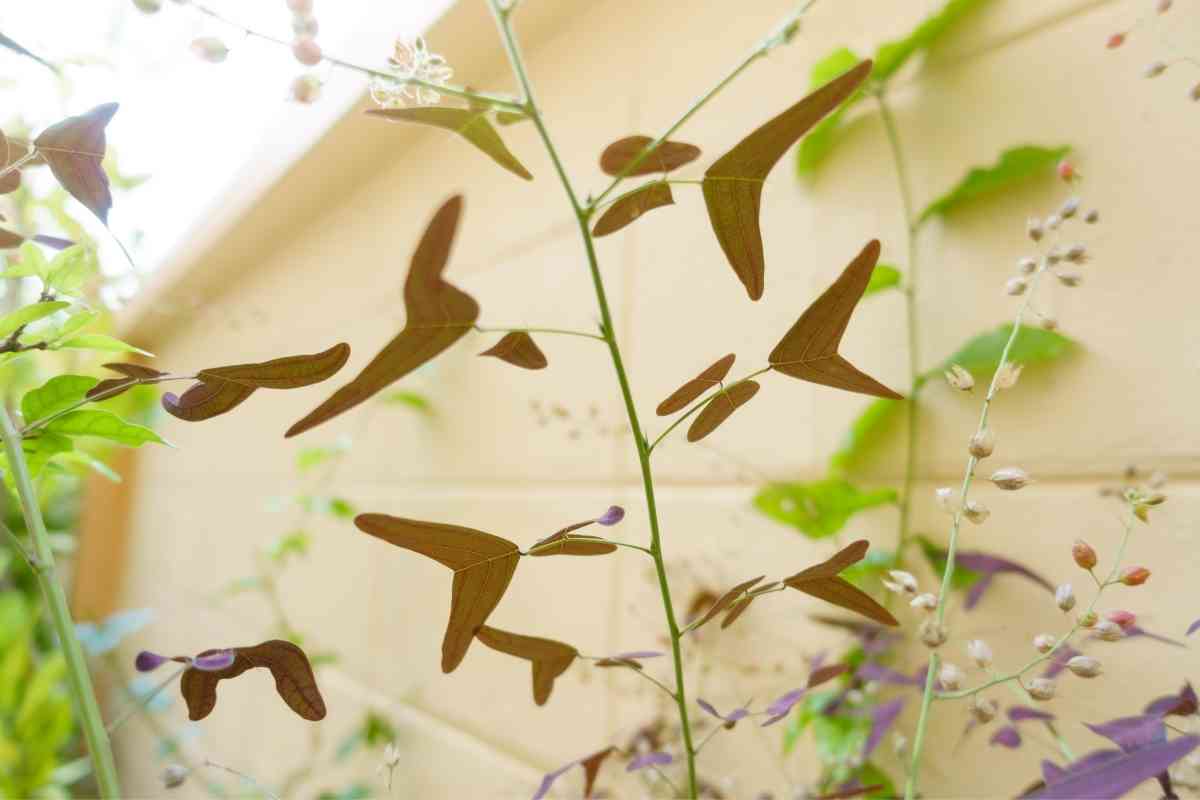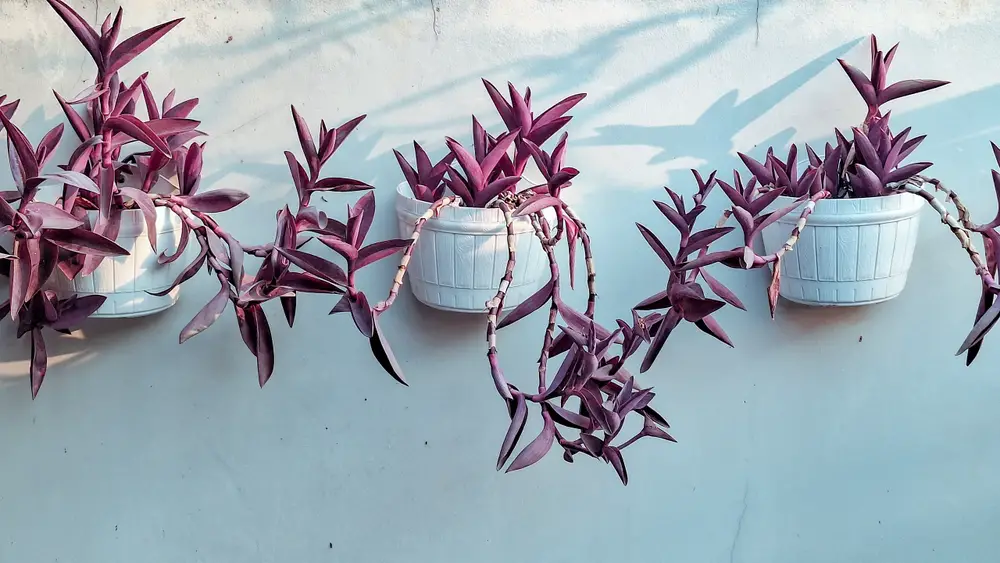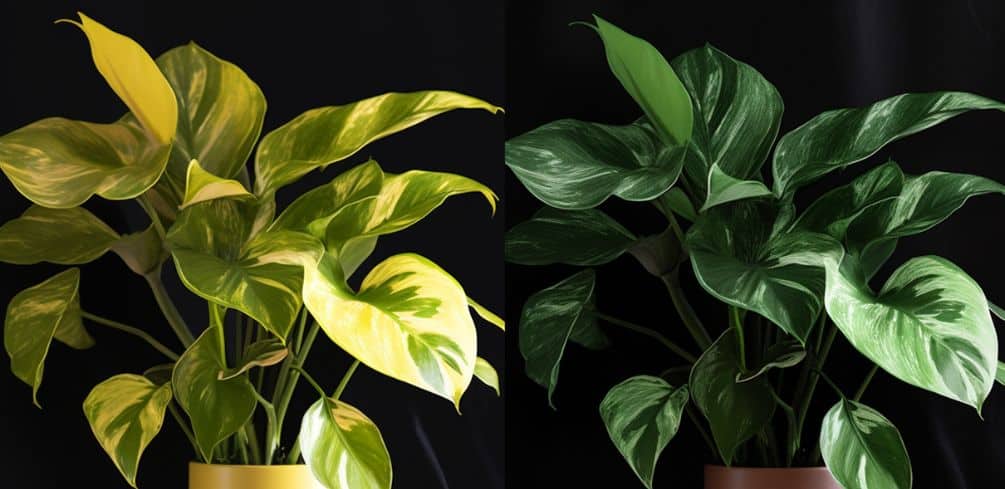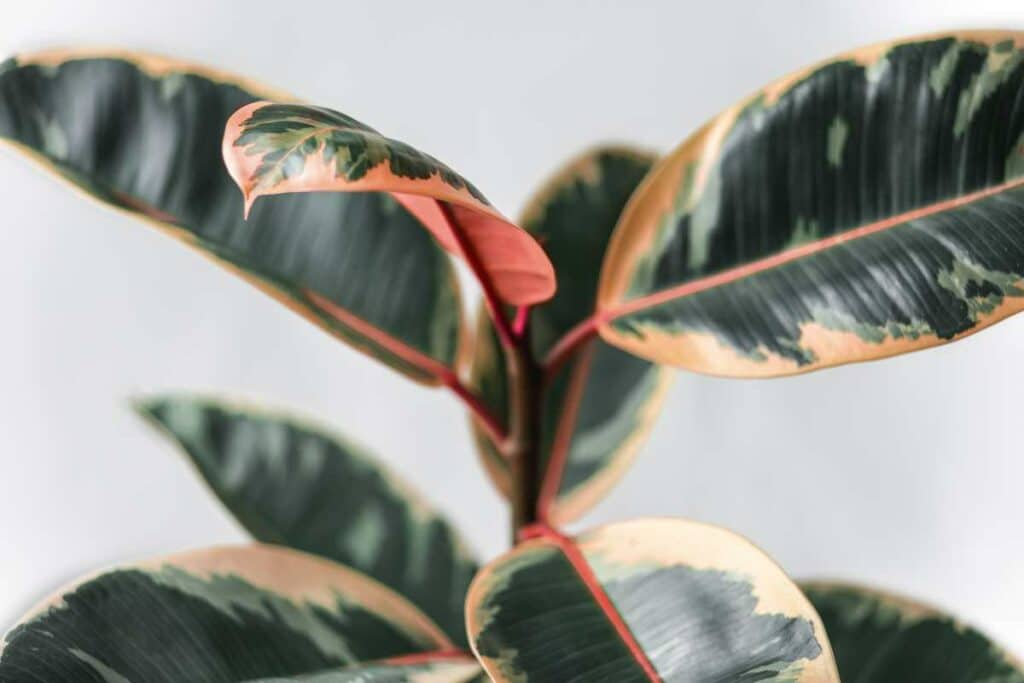Plant whisperers, anthophiles and plantsmen and women everywhere are intrigued by the hottest new houseplant on the block.
Its name is Christia obcordata, but it is better known as the Butterfly plant due to its striking foliage.
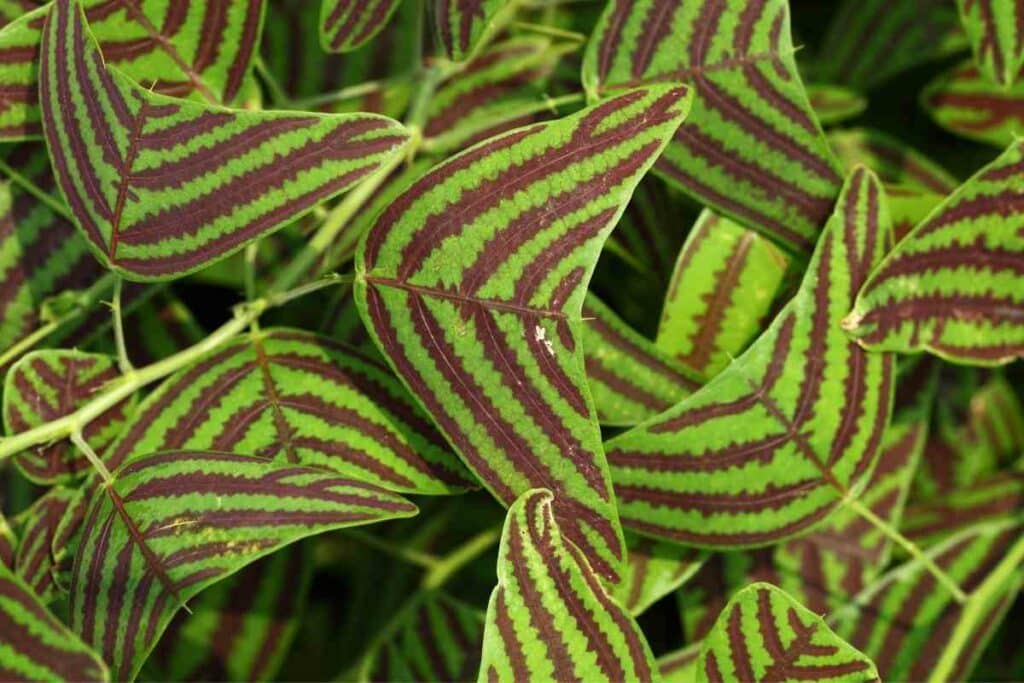
Right now, Butterfly plants are relatively rare with most plant lovers growing their own from seeds.
It is an exotic plant that requires very specific conditions to grow and thrive.
If you have been searching for information on Christia Obcordata, you have come to the right place!
In This Article: We round up everything you need to know about this interesting plant and how you can grow one yourself.
Christia Obcordata: the Butterfly Plant Guide
This Asian exotic plant is increasing in popularity across the world.
Christia obcordata, is a prostrate herbaceous perennial known for its striking foliage with triangular burgundy striped green leaves that look like a butterfly’s opened wings.
To add to the vivid display, Christia obcordata grows on long thin stems so the broad, variegated leaves flutter with any breeze or movement nearby – just like a butterfly!
Before becoming the hottest houseplant around, Christia obcordata was a native of the Asian tropics where it would grow in grasslands, waste grounds, and thickets.
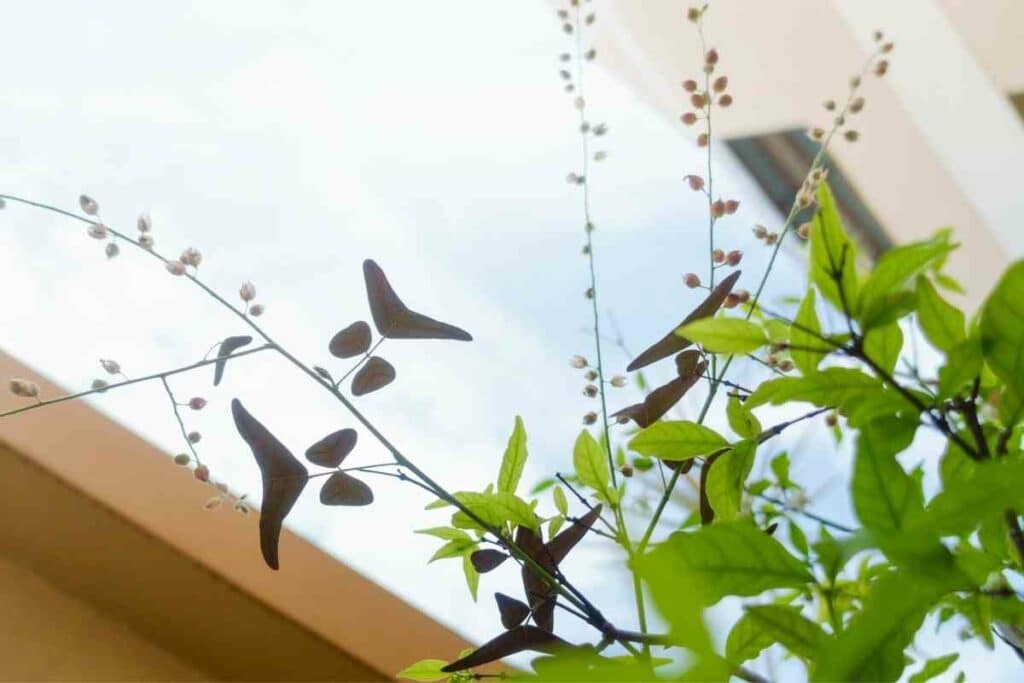
As a bit of a weed, C. obcordata has even been used effectively as a cover crop in Japan and Malaysia to improve soil. These uses have been eclipsed by its demand as an ornamental.
If you are familiar with other plants with butterfly-shaped leaves like the Red Butterfly Wing (Christia vespertilionis) or Purple Shamrock (Oxalis triangularis) you will be delighted with the fluttering patterned foliage C. obcordata, which have vivid greens, deep maroons, and even yellows.
You can choose from dramatic large leaf and smaller leaved varieties.
Is Christia an Obcordata?
No. Obcordata is a type of Christia.
Christia obcordata (Poir.) Bakh.f. is a member of the Christia genus of flowering leguminous plants in the Fabaceae family that include peas and beans.
There are at least 10 other species in the Christia genus that, like Obcordata, are prostrate herbaceous perennial plants.
As a legume, it has a highly helpful symbiotic relationship with bacteria that dwell on root nodules of this plant and fix nitrogen, improving the soil for C. obcordata and other plants.
Christia Obcordata is an exotic and is native to tropical regions across Southeast Asia that include:
- India
- Thailand
- Australia
- Taiwan
- and Laos
It grows as a bush or shrub It may also be known as:
- Butterfly plant
- Butterfly stripe
- Butterfly wing plant
- Swallowtail
- Hedysarum obcordatum Poir.
- Lourea obcordata (Poir.) Desv.
Christia Obcordata Tropical Plant Profile
| Position | Partial sun, partial shade, medium sun |
| Location | Predominantly indoor, but outdoor cultivation is possible if conditions are optimal |
| Soil type | Peat moss, well-drained, moist |
| Soil pH | Alkaline |
| Hardiness zone/ region | 11(southern US, Australia, central and southern Europe, north Africa, southeast Asia) |
| Minimum temperature | 40 to 50 degrees Fahrenheit (4.4 to 10 degrees Celsius) |
| Climate | Humid subtropical |
| Difficulty of cultivation | Moderate |
| Foliage | Semi-evergreen |
| Rate of growth | Moderate |
| Pattern of growth | Clumping shrub or bush |
| Maximum spread | 18 to 24 inches by 18 to 24 inches (46 to 61 centimetres by 46 to 61 centimetres) |
| Stem length | 5.9 inches to 23.6 inches (15 to 60 centimetres) |
| Rootstock | Rhizomatous |
| Lifespan | Perennial |
Christia Obcordata Growing Guide
Because specimens of Christia obcordata are not widely available, many plant enthusiasts are keen to cultivate this perennial from seed themselves.
As the Butterfly plant is a tropical species, efforts to grow it in a temperate climate have largely had a trial-and-error approach.
In this section of the article, we share what seems to work in growing swallowtail from seed as a houseplant and outdoors.
How Do You Germinate Christia Obcordata?
Because Christia Obcordata is an exotic that is relatively rare, you are likely to find that it is much easier to get hold of the seeds for C. Obcordata rather than actual plant specimens.
Thankfully, you can make a success of growing Christia obcordata from seed!
You can sow your purchased seeds in or on the surface of moist substrate with good drainage.
To encourage germination, the seeds need to be kept warm and humid.
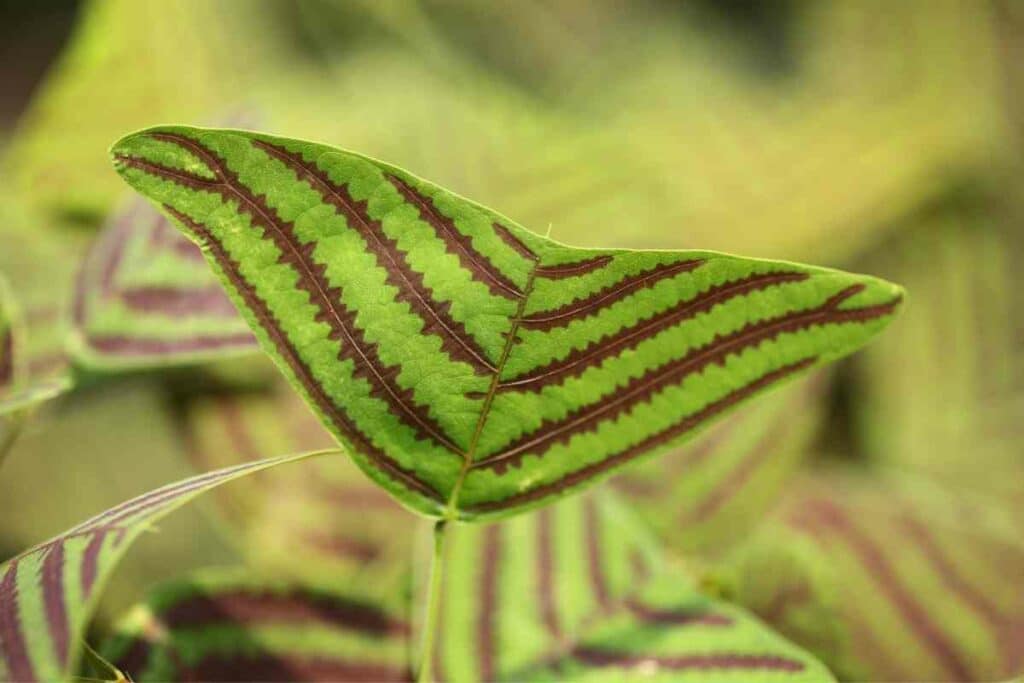
This can be done by covering the seeds with a light layer of transparent nylon that can be removed daily to provide ventilation.
Works Best: Place your sown seeds in a position that is bright but not in direct sunlight. Viable Christia Obcordata seeds will germinate after 10 to 14 days.
How Do You Plant Swallowtail Seeds?
Using a good quality, nutrient rich compost is key to having success in planting swallowtail seeds.
You can germinate the seeds on a makeup pad and then transfer them to soil once they germinate.
An organic-rich all-purpose compost should be used when the seedlings are developed enough for individual potting.
Interestingly, soaking the seeds in room-temperature filtered water can help prepare them for germination.
A heat mat can also be used to maintain warmth for the seeds if you are not located in a warm climate.
Take a look at some swallowtail seeds being germinated.
Planting Swallowtail Stripe Outdoors
If you have a suitable outdoor climate, you may be keen to grow Swallowtail outdoors.
If you have started swallowtail from seed, you can move a young plant outdoors in a large container, or directly in the ground.
Here are the key steps.
Choose a Location Where Your Plant or Plants Will Have Adequate Space
Avoid crowding your young C. obcordata plants so they have room to put down roots and won’t need to compete for light.
Christia plants do not do well in direct sunlight and exposure, so look for a location with partial shade and shelter.
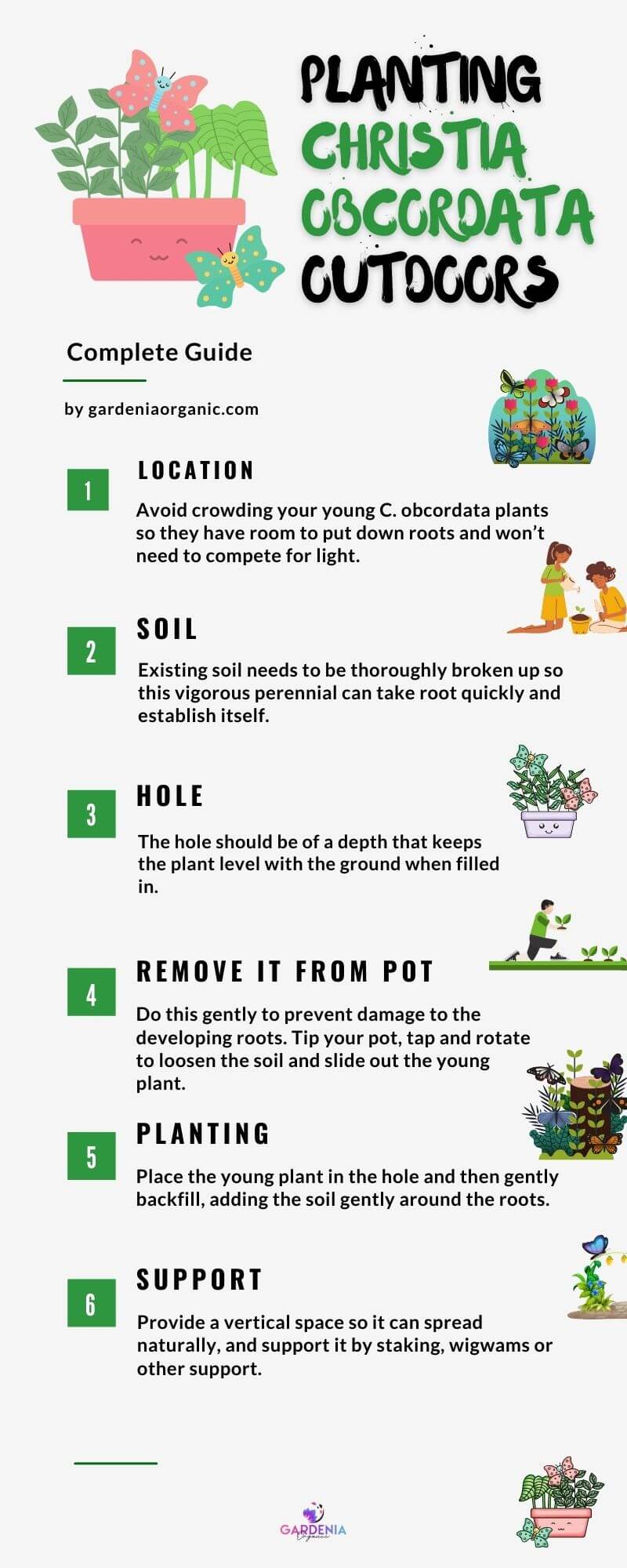
Prepare Your Soil
Existing soil needs to be thoroughly broken up so this vigorous perennial can take root quickly and establish itself.
Add liberal organic matter like peat moss or compost to the soil. You may also want to add fertilizer at this stage.
Dig a Hole
Dig a hole at least twice the size of the potted plant.
The hole should be of a depth that keeps the plant level with the ground when filled in.
Remove Your Butterfly Plant from Its Pot
Do this gently to prevent damage to the developing roots.
Tip your pot, tap and rotate to loosen the soil and slide out the young plant.
Loosen the soil around the roots if they have filled the container.
Plant Your Christia Obcordata
Place the young plant in the hole and then gently backfill, adding the soil gently around the roots.
Firm down the soil around the planted Swallowtail plant with your hand or a trowel until it is level.
Your new planting should be watered according to the regimen below.
Add Support for Your Christia Obcordata
Make the most of the “butterfly” effect of this shrub by providing it with plenty of vertical space so it can spread naturally, and support it by staking, wigwams or other support.
How Do You Take Care of Butterfly Plants?
Here is the process:
- If you are keen on vigorous growth of your butterfly plant, giving it a feed can make all the difference to its performance.
- An all-purpose fertilizer is ideal for feeding Butterfly plants, Choose from granules, liquid feeds or slow-release preparations to give your plant some pep! Use the feed according to the instructions provided.
- Light pruning to remove dead or dying leaves or shape your plant is all that is needed.
- If the temperature dips, it will need protection or need to be moved indoors.
Does Butterfly Plant Need Sunlight?
Christia obcordata fares best in bright light, though direct sunlight may be too much for this plant.
As long as you can maintain a suitable temperature, partial shade may be just right for your new plant. 6 to 8 hours of sunlight is a must.
How Do You Water Butterfly Plants?
Swallowtail plant appreciates moisture and humidity, so it is vital that you establish a regimen of regular watering so that this plant can thrive.
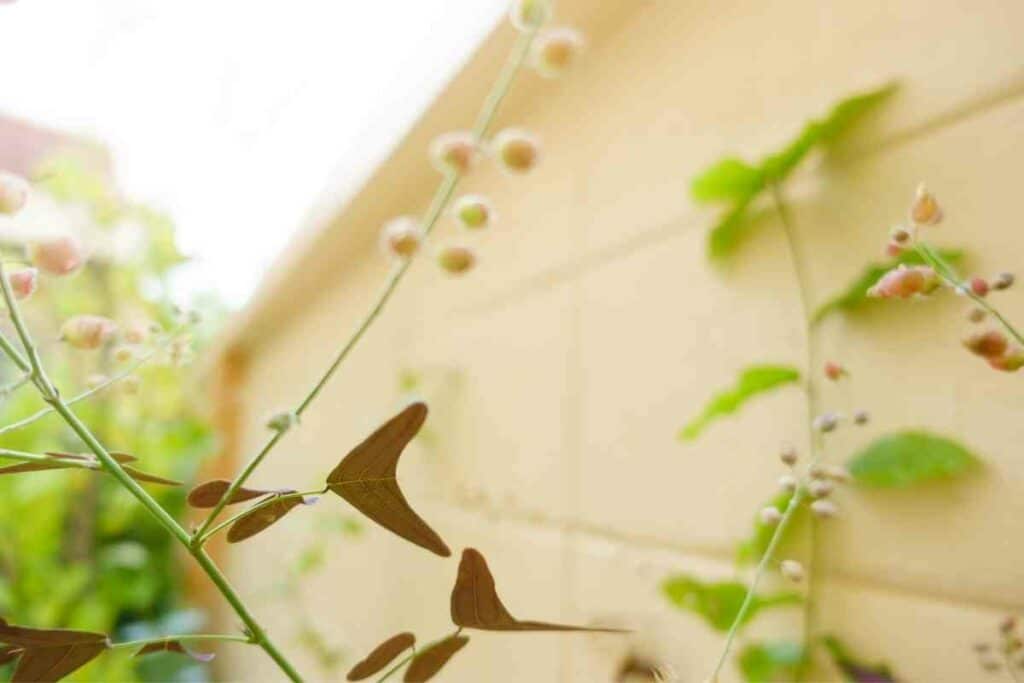
Once a Butterfly plant has been planted or potted, it should be watered lightly on a daily basis for the first two weeks, especially if it is planted in sandy soil that does not water easily.
The watering can then be tapered off every two to three days.
When watering Christia obcordata, focus the water specifically on the root area, which typically spreads to a maximum of 6 to 12 inches (15 to 30 centimetres) from the base of a mature plant. Soaker hoses can be very effective at delivering water to this plant, especially if humidity is low.
You can assess whether this plant has adequate water by examining the soil at its base. If the first few inches of soil depth are dry, it’s time to water.
Remember This: Avoid getting water on the leaves of Christia obcordata as this can encourage mold and mildew.
Christia Obcordata Propagation
Currently starting C. obcordata from seed is the most widely used method of raising new plants.
However, horticulturists are also experimenting with propagating these rare plants from cuttings.
If successful, using cuttings provides the opportunity to get a mature plant more quickly as you can bypass the challenges of raising this plant from seed.
Many gardeners and horticulturists who grow this plant will invest in LED grow lights to ensure that it gets adequate sunlight for growth.
Here is a great video that explains more about the practical aspects of propagating obcordata.
Is the Butterfly Plant an Indoor Plant?
Christia obcordatat can be grown indoors, either as a houseplant or in a greenhouse.
As it is a USDA zone 11 or 12 plant, it will adapt well to a warm indoor environment, near to a window for plenty of sunlight.
Rounding Up
This plant really is as striking as it looks and makes a great addition to your home, greenhouse or garden.
Raising Christia obcordata from seed is a satisfying challenge and currently is the most reliable way for people in the UK, Europe and the US to have their own plant.
There are still gaps in knowledge of its ability to adapt and survive in more temperate climes and also potential pests and diseases, but for now relish the challenge and the joy of seeing these fluttering butterfly wings for yourself!
You Might Also Like
- Philodendron Care, Varieties, And Aesthetic Home Arrangements
- Best House Plants for Low Light – Thriving Indoors with Minimal Sunlight
- 15 Air-Purifying Houseplants That Release The Most Oxygen
- Purple Houseplants: Your Guide to Dramatic Indoor Beauty
- Philodendron Moonlight Vs. Golden Goddess
- How to Revive Your Rubber Plant: 6 Tips to Help Your Rubber Tree Thrive Again
